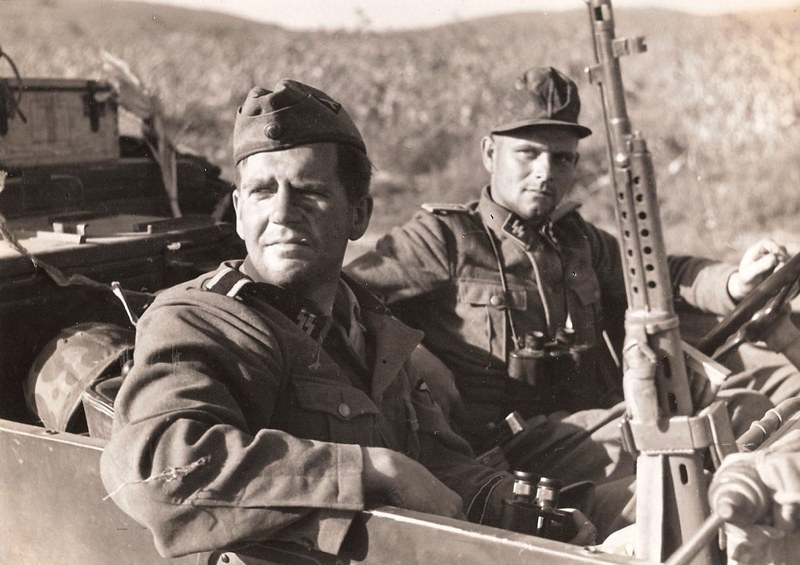|
|
Post by pieter on Mar 4, 2019 13:07:01 GMT -7
Invasion of the NetherlandsThe German Wehrmacht attacked the Netherlands in the early hours of 10 May 1940. The attack started with the Luftwaffe crossing through Dutch airspace, giving the impression that Britain was the ultimate target. Instead, the aircraft turned around over the North Sea and returned to attack from the west, dropping paratroopers at Valkenburg and Ockenburg airfields, near the Dutch seat of government and the Royal Palace in The Hague, starting the Battle for the Hague. While Germany had planned to take over swiftly using this tactic, the Dutch halted the advance at the core region of Fortress Holland, slowing down the German invasion.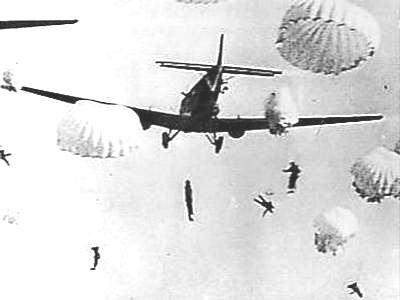 German paratroopers dropping from a Ju-52/3m during the Battle for the Hague German paratroopers dropping from a Ju-52/3m during the Battle for the Hague German paratroopers (Fallschirmjäger) at the Inner Court (Binnenhof), The Hague, houses the meeting place of both houses of the States General of the Netherlands (the Dutch parliament) shortly after occupying the city, 1940German airborne troops (Fallschirmjäger) being dropped in the NetherlandsBattle for Rotterdam German paratroopers (Fallschirmjäger) at the Inner Court (Binnenhof), The Hague, houses the meeting place of both houses of the States General of the Netherlands (the Dutch parliament) shortly after occupying the city, 1940German airborne troops (Fallschirmjäger) being dropped in the NetherlandsBattle for Rotterdam German Troops in Rotterdam in May 1940 German Troops in Rotterdam in May 1940The situation in Rotterdam on the morning of 13 May 1940 was a stalemate as it had been over the previous three days. Dutch garrison forces under Colonel Scharroo held the north bank of the Nieuwe Maas river, which runs through the city and prevented the Germans from crossing; German forces included airlanding and airborne forces of General Student and newly arrived ground forces under General Schmidt, based on the 9th Panzer Division and the Leibstandarte Adolf Hitler, a motorized SS regiment. A Korps Mariniers unit in Rotterdam preparing to ship out to the Dutch East Indies successfully defended the bridges across the Maas, preventing German paratroopers in the center of the city from rendezvousing with conventional German infantry. The Germans ended the stalemate by bombing Rotterdam. When the surrender was declared and the Dutch soldiers came out of their positions, the German commander who was expecting a full battalion of men was stunned to see only a few Dutch Marines emerge in their black uniforms. He ordered his men to salute them out of respect for their bravery and determination and labeled them Zwarte duivels ( The Black Devils). On the Morning of 14 May, Hitler issued his "Weisung" Nr. 11. Concerning the Dutch theatre of operations he says the following: The resistance capability of the Dutch army has proved to be stronger than expected. Political as well as military reasons demand that this resistance is broken as soon as possible. It is the task of the army to capture the Fortress Holland by committing enough forces from the south, combined with an attack on the east front. In addition to that the air force must, while weakening the forces that up till now have supported the 6th Army, facilitate the rapid fall of the Fortress Holland.General Schmidt had planned a combined assault the next day, 14 May, using tanks of the 9th Panzer supported by flame throwers, SS troops and combat engineers. The airlanding troops were to make an amphibious crossing of the river upstream and then a flank attack through the Kralingen district. The attack was to be preceded by artillery bombardment, while Gen. Schmidt had requested the support of the Luftwaffe in the form of a Gruppe (about 25 aircraft) of Junkers Ju 87 dive-bombers, specifically for a precision raid. Schmidt's request for air support reached Berlin, staff of Luftflotte 2. Instead of precision bombers, Schmidt got carpet bombing by Heinkel He 111 bombers besides a Gruppe of Stukas focussing on some strategic targets.  Rotterdam 1940. Dutch marines, prisoners of war, German Wehrmacht soldiers Rotterdam 1940. Dutch marines, prisoners of war, German Wehrmacht soldiers
|
|
|
|
Post by pieter on Mar 4, 2019 13:07:13 GMT -7
Nazi Collaborators - Anton Mussert - Part 1
For John, the Dutch guys in the black jackets and the Dutch helmets walking over the tram tracks on 8:18 were the Dutch Marines in Rotterdam.
|
|
|
|
Post by pieter on Mar 4, 2019 13:08:15 GMT -7
Nazi Collaborators - Anton Mussert - Part 2
|
|
|
|
Post by pieter on Mar 4, 2019 14:16:29 GMT -7
Nazi Collaborators - Anton Mussert - Part 3
Nazi Collaborators - Anton Mussert - Part4
|
|
|
|
Post by pieter on Mar 4, 2019 14:46:17 GMT -7
Nazi Collaborators - Anton Mussert - Part 4
|
|
|
|
Post by pieter on Mar 4, 2019 14:49:11 GMT -7
Dutch Nazi symbolism Emblem of the National-Socialist Movement in the Netherlands, 1931-1936 Emblem of the National-Socialist Movement in the Netherlands, 1931-1936 The emblem of the 34th SS Volunteer Grenadier Division Landstorm Nederland The emblem of the 34th SS Volunteer Grenadier Division Landstorm Nederland Dutch men of the 34th SS Volunteer Grenadier Division Landstorm Nederland, probably somewhere on the Eastern Front Dutch men of the 34th SS Volunteer Grenadier Division Landstorm Nederland, probably somewhere on the Eastern Front Dutch men of the 34th SS Volunteer Grenadier Division Landstorm Nederland on horses, probably somewhere on the Eastern Front Dutch men of the 34th SS Volunteer Grenadier Division Landstorm Nederland on horses, probably somewhere on the Eastern Front NSB, Dutch National Socialist Movement, open air, party meeting in 1941 NSB, Dutch National Socialist Movement, open air, party meeting in 1941 NSB mass meeting in Utrecht in 1941 NSB mass meeting in Utrecht in 1941 The armed paramilitary Ladwacht NSB militia marching on their way to a training faciltiy The armed paramilitary Ladwacht NSB militia marching on their way to a training faciltiy The flag of the National Socialist Movement, the NSB The flag of the National Socialist Movement, the NSB Dutch WWII NSB (Nationaal-Socialistische Beweging ) cap Dutch WWII NSB (Nationaal-Socialistische Beweging ) cap WWII Dutch NSB (Nationaal-Socialistische Beweging ) armband WWII Dutch NSB (Nationaal-Socialistische Beweging ) armband De Weerafdeling (W.A.), NSB collaborationalist paramilitary militia in 1941The Weerafdeling (W.A.), NSB collaborationalist paramilitary militia marching in Amsterdam on 31 december 1940 De Weerafdeling (W.A.), NSB collaborationalist paramilitary militia in 1941The Weerafdeling (W.A.), NSB collaborationalist paramilitary militia marching in Amsterdam on 31 december 1940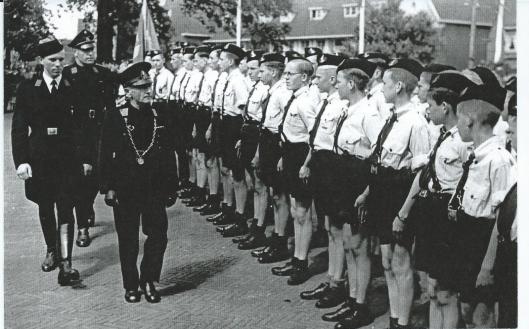 Young people of the Dutch version of the Hitlerjugend (Hitler Youth), the Jeugdstorm of the NSB Young people of the Dutch version of the Hitlerjugend (Hitler Youth), the Jeugdstorm of the NSB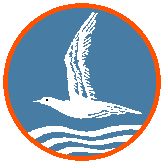 The logo of the Nationale Jeugdstorm, the Dutch Hitlerjugend The logo of the Nationale Jeugdstorm, the Dutch Hitlerjugend Men of the Dutch Waffen SS Men of the Dutch Waffen SS
|
|
|
|
Post by pieter on Mar 4, 2019 14:51:00 GMT -7
Other Dutch Nazi collaborators, dedicated, ideological, fanatical Nazi'sMeinoud Rost van Tonningen Meinoud Marinus Rost van Tonningen (19 February 1894 – 6 June 1945) was a Dutch politician of the National Socialist Movement (NSB). During the German occupation of the Netherlands in World War II, he collaborated extensively with the German occupation forces. He was the husband of Florentine Rost van Tonnigen.Rost van Tonningen became a member of the NSB on 7 August 1936 after returning from Austria. He won a seat in Parliament in the elections that year and became the leader of his parliamentary party in the Dutch House of Representatives. Meinoud Marinus Rost van Tonningen (19 February 1894 – 6 June 1945) was a Dutch politician of the National Socialist Movement (NSB). During the German occupation of the Netherlands in World War II, he collaborated extensively with the German occupation forces. He was the husband of Florentine Rost van Tonnigen.Rost van Tonningen became a member of the NSB on 7 August 1936 after returning from Austria. He won a seat in Parliament in the elections that year and became the leader of his parliamentary party in the Dutch House of Representatives.
He also became editor-in-chief of the NSB party newspaper, Het Nationale Dagblad, which he made into a vessel of his own ideas to the dismay of the NSB party leadership. Rost van Tonningen was obsessed with Germany and the Greater German Idea, while Anton Mussert, the leader of the NSB, had more affinity with the idea of Fascism as carried out by Benito Mussolini in Italy.
It was mainly Rost van Tonningen's influence that caused the NSB to become more openly anti-semitic; Rost van Tonningen's anti-semitism was more radical than NSB leader Anton Mussert. Because of his influence. the NSB became closer to the German Nazi Party, the NSDAP.
1939 saw Rost van Tonningen establish the paramilitary organisation – the Mussert guards. Many members of this organisation later became members of the Nederlandsche SS. Rost van Tonningen's request to be admitted as a member of the SS Westland regiment was at first denied, because he had been born in the Dutch East Indies, and was unable to obtain documents showing that his family had 150 years of "pure Aryan blood". However, from 1943, Indos (Dutch Eurasians) could join the lower ranks of the Waffen SS.[citation needed] (Whereas those deemed to be "Native Indonesians", with no or little European ancestry, were still not allowed.) In 1944, Rost van Tonningen again applied for membership of the SS, and was admitted.During the German occupation of the Netherlands, Rost van Tonningen was appointed liquidation commissar for all Marxist organisations by Arthur Seyss-Inquart, the Austrian administrator for the Netherlands.
This was targeted especially at the Social Democratic Workers' Party (SDAP), the Revolutionary Socialist Party (RSAP), and the Communist Party (CPN). The CPN had to be liquidated, the SDAP had to be "reconstructed" based a National Socialist doctrine. This reconstruction failed because the SDAP had destroyed most of its archives and administration papers.
The SDAP leadership refused to cooperate, and during regional meetings of the SDAP it was announced that the SDAP would not collaborate with the German occupation forces. Virtually all SDAP affiliated organisations refused to cooperate with Rost van Tonningen's attempts to 'nazify' them. Most organisations (e.g., Labourers Sports Association, musical organisations) chose to dissolve themselves rather than become part of the Nazi hierarchy. On 5 July 1941, the SDAP was disbanded, together with all other remaining political parties.Financial administratorOn 26 March 1941, Rost van Tonningen was appointed to the posts of Secretary-General of the Finance ministry and President of the Dutch National Bank, the Nederlandsche Bank. During his tenure in these functions, the Germans held the Netherlands financially responsible for the costs of the occupation of their country. The total cost of this to the Dutch society was calculated by the Dutch government after the war as being 9,488,000,000 Reichsmark. Besides this amount, an amount of 5,750,000,000 Reichsmark of loans made by the Netherlands to Germany was never repaid, so a total amount of 14,500,000,000 Reichsmark flowed to Germany. (Comparison: France 43,250,000,000 and Belgium 11,070,000,000.)
On 1 April 1941, the currency barriers between the Netherlands and the Third Reich were removed, and on 1 September 1941, the last obstructions in the currency markets between the two countries were finally removed. This meant that the Germans could trade the gold of the Dutch National Bank for paper Reichsmarks.
The other financial heads of occupied territories were not as eager as Rost van Tonningen to remove the barriers and the Netherlands could not spend the Reichsmarks obtained in this way to pay these other countries. The other territories brought their Reichsmarks to the Netherlands to pay their foreign debt; Germany, Denmark, Hungary and Occupied France all paid their debts in this way. This and the purchase of Dutch goods for Reichsmarks by the Germans made the Dutch balance of Reichsmarks grow from 83,000,000 (March 1941) to 3,646,000,000 (September 1941). Rost van Tonningen in the meantime kept printing large amounts of Dutch money. This led to large inflation figures.
As Secretary-General for Special Economic Affairs, Rost van Tonningen was involved in the establishment of the Nederlandse Oostcompagnie (Dutch East Company), an organisation involved in the reconstruction of the Ukraine. The efforts of this company were an abysmal failure.DeathOn 5 September 1944, Dolle Dinsdag (Mad Tuesday), Rost van Tonningen fled with a number of other Dutch Collaborators, fearing the rapidly advancing Allied armies. He turned up again a few days later, but was fired from his position as successor to the NSB leadership by Anton Mussert after writing an article in which he praised the members of the Dutch NSB youth organisation (Nationale Jeugdstorm, National Youth Storm) who had joined the Hitlerjugend division.
In the summer of 1944, Rost van Tonningen was trained to be an officer in the first battalion of the Landstorm Nederland, a Dutch paramilitary defense organisation. In March 1945 he left for the frontlines, which ran through the middle of the Netherlands, in the Betuwe. On 8 May 1945 he was taken prisoner by Canadian troops, and was held in a prisoner camp in Elst. From there he was transferred to Utrecht and on 24 May 1945 he was moved to the prison in Scheveningen. Rost van Tonningen allegedly committed suicide there by jumping from a balcony in the prison on 6 June 1945. There have been persistent rumors, but no proof, that he did not jump by himself. He never stood trial for his actions.Mrs. Florentine Rost van Tonningen-Heubel (1914-2007) This woman, called the 'Black Widow' (in the sense of Black Sheep), stayed a determined National Socialist until the end of her life. She openly admired Adolf Hitler, Heinrich Himmler, Anton Mussert (the Dutch Nazi NSB - National socialist Movement - leader) and ofcourse her own husband, the Great-Germanic, Dutch Nazi Meinoud Rost van Tonningen. She stayed loyal to her husband until her death, and today like Rudolf Hess, she is an icon for Dutch and foreign neo-Nazi's who still visit her grave. This woman, called the 'Black Widow' (in the sense of Black Sheep), stayed a determined National Socialist until the end of her life. She openly admired Adolf Hitler, Heinrich Himmler, Anton Mussert (the Dutch Nazi NSB - National socialist Movement - leader) and ofcourse her own husband, the Great-Germanic, Dutch Nazi Meinoud Rost van Tonningen. She stayed loyal to her husband until her death, and today like Rudolf Hess, she is an icon for Dutch and foreign neo-Nazi's who still visit her grave.
Florentine Sophie Rost van Tonningen (née Heubel; 14 November 1914 – 24 March 2007) was the wife of Meinoud Rost van Tonningen, the second leader of the National Socialist Movement in the Netherlands (NSB) and President of the National Bank during the German occupation (1941–1945). Because she continued to support and propagate the ideals of National Socialism after World War II and the death of her husband, she became known in the Netherlands as the "Black Widow".
Biography
Youth
Florentine Heubel was the youngest daughter of Gustav Adolph Heubel, banker at the firm Jan Kol & Co. and the aristocrat Cornelie van Haren Noman. There were three more children in the family, daughter Annie (born in 1906) and sons Dolf (1904) and Wim (1910). Florrie Heubel grew up in Hilversum, where the family stood in high regard. When the young Princess Juliana paid a visit to Hilversum, Wim and Florrie were asked to play a game of tennis with the princess. In the 1930s, Florrie and Wim Heubel became active in the Nationale Jeugdstorm, the youth organisation of the NSB modelled on the Hitlerjugend. She studied biology at the University of Utrecht, showing a special interest in ethology.
In connection with her studies, Heubel stayed for some time in Berlin during the summer of 1936. She was impressed by Adolf Hitler and the "camaraderie, discipline and commitment" of the National Socialist movement. A year later she made a trip with Wim to the Dutch East Indies, where her eldest brother Dolf worked as agricultural engineer. When she came back to the Netherlands, she left the NSB because she thought that the party was not adhering closely enough to eugenics ideals and that party leader Anton Mussert did not share her concerns. In 1939, her brother introduced her to Meinoud Rost van Tonningen, who already was an important and influential man in the NSB. During the German invasion of the Netherlands on 10 May 1940, Heubel was in Berlin.
Marriage
On 21 December 1940, the day of the Winter Solstice, Heubel married Meinoud Rost van Tonningen.

The Marriage of Meinoud and Florrie Rost van Tonningen in National Socialist fashion on 21 December 1940
Upon request, Heinrich Himmler, the German SS-Reichsführer, had approved their genealogy, following which their wedding became the first SS marriagein the Netherlands. The Rost van Tonningen family would have three sons with the unusual names of Grimbert (1941), Ebbe (1943), and Herre (1945). Her children would openly distance themselves from their mother's political views in the 1980s.
The youngest son was born on 28 April 1945 in Terschelling on the day her brother Wim Heubel fell in battle fighting with SS forces near Elst. She soon fled via Cuxhaven to Goslar in Germany, where her parents, who owned local property, were also staying. Her husband Meinoud was captured and imprisoned on 8 May by Canadian troops.
Immediately after the war, Meinoud Rost van Tonningen died in the Scheveningen prison while awaiting trial. He allegedly jumped over the balustrade of a staircase. Rost van Tonningen-Heubel always contended that her husband had been murdered and that this was supported by testimony from fellow prisoners. The motive would have been that her husband, as President of De Nederlandsche Bank, knew too much about illegal money transactions by prominent people. The former RIOD (National Institute of War Documentation) employee, A. J. van der Leeuw, supported her version during the television show Het zwarte schaap (The Black Sheep) and suggested that her husband may have been driven to commit suicide in prison.
In her book, In Search Of My Wedding Ring, Rost van Tonningen-Heubel accused Prince Bernhard of bearing the main responsibility for her husband's death, as he had been head of the Domestic Forces, claiming that her private archive contained evidence of this. Her enormous archive is only accessible through her private secretary and archivist, F. J. A. M. van der Helm, who assisted her from 1980 by storing and managing the archive.
Post-war period

The massive golden wedding ring with the life tree as symbol which Rost van Tonningen wore for 67 years. At her wedding this ring was kissed by Adolf Hitler. Since then she treated it as a "holy relic".
After the death of her husband, Rost van Tonningen-Heubel remained active in several far-right movements. Initially, she was placed under state supervision, like many former National Socialists. Her supervisor, Clerk of the Senate Anton Leo de Block, put her three sons under the guardianship of her brother-in-law Nico Rost van Tonningen, who was in the service of Queen Juliana. Her son Grimbert would later leave his mother and move in with the Fentener van Vlissingen family, one of the leading Dutch industrialist families whose fortune was based on shipping coal on the Rhine in the 19th century.
In 1952, she moved from the Hague to Villa "Ben Trovato" in Velp. She considered the villa's name a sign "from above", as "rovato" would correspond to ROst VAn TOnningen. By now she had a private company making heating equipment. In 1968, she appeared in a documentary portrait of Anton Adriaan Mussert by director Paul Verhoeven, the first time she made a nationwide public appearance. Several times she was convicted of distributing Nazi literature and organizing National Socialist meetings with old Nazi's and Neo-Nazi visitors. The widow's home was repeatedly searched by the police, always without result, and was more than once targeted by arsonists. "House searches, broken windows and arson often took place", she writes in her book, In Search Of My Wedding Ring.
She maintained lifelong contacts with many prominent ex-National Socialists and National Socialist sympathizers, such as the French professor Robert Faurisson; David Irving; Arthur Axmann; Gudrun Himmler (daughter of Heinrich Himmler); Ilse Pröhl (widow of Rudolf Hess); Gertrud and Arthur Seyss-Inquart; Erich Priebke; Miguel Serrano; Matt Koehl, commander of The New Order; Thies Christophersen; Leon Degrelle; Princess Marie Adelheid of Lippe-Biesterfeld; Paula Hitler; Richard Edmonds; Hanns Albin Rauter; Franz von Papen; Hjalmar Schacht; Ernst Zündel; General Otto Ernst Remer; Manfred Roeder; Colin Jordan; Udo Walendy; Horst Mahler; Alfred Vierling; members of the Vlaams Blok; and many others.
Until her death in 2007, Rost van Tonningen-Heubel received a modest widow's pension from the Dutch state, as her husband had once been a member of parliament. This caused much commotion when it became known in 1986. After a hearing in the Lower House, she retained this pension. In 2000, the "Black Widow" appeared in the VARA television program The Black Sheep. In her interview, the 85-year-old widow defended herself so fiercely that VARA considered dropping the broadcast. She planned to move from her villa to an apartment in nearby Arnhem, but legal objections prevented her from doing so. Shortly afterwards, she sought asylum in Belgium, claiming that her life had become impossible in the Netherlands. Until her death, she defended the ideas of National Socialism.
Death
Florentine Rost van Tonningen-Heubel died of old age on 24 March 2007 in her home in Waasmunster, at the age of 92. She was survived by her three sons and twelve grandchildren. A week later, she was buried in Rheden. As early as 1996, she had bought a gravesite and a headstone with her name, date of birth and the inscription, "The truth makes free". The site is controversial, and local residents fear that the grave could become an attraction for right wing extremists. The municipality of Rheden locked down the area at the moment of her funeral, as there were many concerns the funeral would attract many right wing extremists.

Rost van Tonningen at her future grave in 1998. She had bought the grave in 1996 and was buried there in 2007
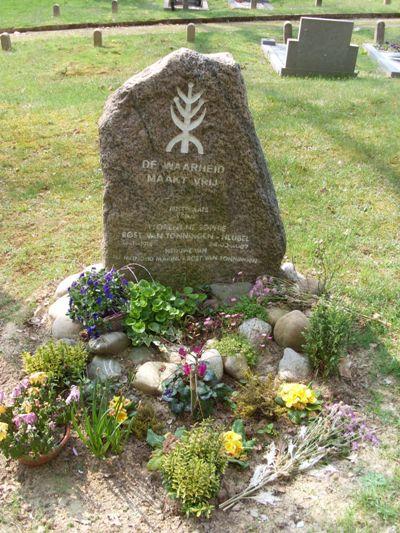
The grave of Florentine Rost van Tonningen-Heubel (1914-2007)
One of her sons, Ebbe Rost van Tonningen, published a memoir in 2012 about his childhood, In Niemandsland ("In no man's land").
|
|
|
|
Post by pieter on Mar 4, 2019 16:37:06 GMT -7
|
|
|
|
Post by pieter on Mar 4, 2019 16:48:04 GMT -7
Cornelis van Geelkerken Cornelis van Geelkerken (Dutch pronunciation: [kɔrˈneːləs fɑŋ ˈɣeːlkɛrkə(n)][1] 19 March 1901 in Sint-Jans-Molenbeek – 29 March 1976 in Ede) was co-founder of the Dutch National Socialist Movement, the NSB (Nationaal Socialistische Beweging). Cornelis van Geelkerken (Dutch pronunciation: [kɔrˈneːləs fɑŋ ˈɣeːlkɛrkə(n)][1] 19 March 1901 in Sint-Jans-Molenbeek – 29 March 1976 in Ede) was co-founder of the Dutch National Socialist Movement, the NSB (Nationaal Socialistische Beweging).
Cornelis van Geelkerken was born in Sint-Jans-Molenbeek, Belgium. In the 1920s he gravitated toward extreme nationalism. Proposing an authoritarian, anti-democratic movement to Anton Mussert they formed the National Socialist Movement (NSB). He became director of their youth corps, the Nationale Jeugdstorm. After the German invasion Geelkerken was appointed Inspector-General of the Nederlandsche Landwacht (home guard set up to combat the Resistance). After the war he was sentenced to life imprisonment but released in 1959. He died on 29 March 1976 in Ede in the province of Gelderland in the Middle Eastern part of the Netherlands.
Van Geelkerken focussed his attention on the internal organisation of the NSB party and with police tasks.
His vicious antisemitic, anti-Orange (Dutch royal family), anti-English and anti-democratic radio shows were part of the Agitprop of the National Socialist (Nazi) NSB. He helped shaping a climate of hatred against jews, democrats, socialists and communists. Foreground, on the left, Arthur Axmann, Reich Youth Leader, and, on the right, Cornelis (Kees) van Geelkerken, leader of the Youth Storm, in conversation with three high ranking Germans. Background on the left an other member of the Youth Storm. Van Geelkerken of wearing a leather jacket and on his head the "karpoets" of the Youth Storm. Foreground, on the left, Arthur Axmann, Reich Youth Leader, and, on the right, Cornelis (Kees) van Geelkerken, leader of the Youth Storm, in conversation with three high ranking Germans. Background on the left an other member of the Youth Storm. Van Geelkerken of wearing a leather jacket and on his head the "karpoets" of the Youth Storm.
|
|
|
|
Post by pieter on Mar 4, 2019 17:18:32 GMT -7
Operation SilbertanneOperation Silbertanne (silver fir) was the codename of a series of murders that were committed between September 1943 and September 1944 during the German occupation of the Netherlands. The assassinations were carried out by a death squad composed of Dutch members of the SS and Dutch veterans of the Eastern Front.BackgroundAfter Adolf Hitler had approved Anton Mussert as "Leider van het Nederlandse Volk" (Leader of the Dutch People) in December 1942, he was allowed to form a national government institute, a Dutch shadow cabinet called "Gemachtigden van den Leider", which advised Reichskommissar Arthur Seyss-Inquart from 1 February 1943. The institute consisted of a number of deputies in charge of defined functions or departments within the administration.
On 4 February Retired General and Rijkscommissaris Hendrik Seyffardt, already head of the Dutch SS volunteer group Vrijwilligerslegioen Nederland [nl], was announced through the press as “Deputy for Special Services”. As a result, the Communist resistance group CS-6 under Dr. Gerrit Kastein (named after its address, 6 Corelli Street, in Amsterdam), concluded that the new institute would eventually lead to a National-Socialist government, which would then introduce general conscription to enable the call-up of Dutch nationals to the Eastern Front. However, in reality the Nazis only saw Mussert and the NSB as a useful Dutch tool to enable general co-operation, and furthermore, Seyss-Inquart had assured Mussert after his December 1942 meeting with Hitler that general conscription was not on the agenda. However, the Communist resistance group CS-6 assessed that Seyffardt was the most important person within the new institute who was eligible for an attack, after the heavily-protected Mussert.

Retired General and Rijkscommissaris and head of the Dutch SS Hendrik Seyffardt
After approval from the Dutch government in exile in London, on the evening of Friday 5 February 1943, after answering a knock at his front door in Scheveningen, Den Haag Seyffardt was shot twice by student Jan Verleun who had accompanied Dr. Kastein on the mission. A day later Seyffardt succumbed to his injuries in hospital. A private military ceremony was arranged at the Binnenhof, attended by family and friends and with Mussert in attendance, after which Seyffardt was cremated. On 7 February, CS-6 shot fellow institute member “Gemachtigde voor de Volksvoorlichting” (Attorney for the national relations) H.Reydon and his wife. His wife died on the spot, while Reydon died on 24 August of his injuries. The gun used in this attack had been given to Dr. Kastein by Sicherheitsdienst (SD) agent Anton van der Waals, who after tracking him back through information, arrested him on 19 February. Two days later Dr. Kastein committed suicide so as not to give away Dutch Resistance information under torture. Dr. Kastein committed suicide so as not to give away Dutch Resistance information under torture. Dr. Kastein committed suicide so as not to give away Dutch Resistance information under torture.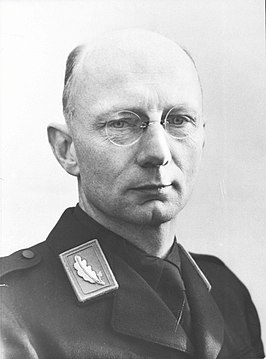 Hermannus Reydon (Voorschoten, 6 december 1896- Leiden, 24 augustus 1943) was eDutch National socialist activist and civil servant.ActivitySeyffardt Hermannus Reydon (Voorschoten, 6 december 1896- Leiden, 24 augustus 1943) was eDutch National socialist activist and civil servant.ActivitySeyffardt and Reydon's deaths led to massive Nazi Germany reprisals in the occupied Netherlands, under Operation Silbertanne, supported by various German officers. Silbertanne was intended as reprisal for the attacks made on predominantly Dutch collaborators and German occupational forces by t he Dutch resistance. The highest SS and Police Leader in the occupied Netherlands, SS-Obergruppenführer Hanns Albin Rauter, the second most powerful man in the Netherlands after Reichskommissar of the Netherlands Arthur Seyss-Inquart, gave order to retaliate by assassinating civilians presumed to be in some way connected to the resistance or to be orange-minded, meaning Dutch patriots, or anti-German. The task of perpetrating the killings was first assigned to especially formed death squads, though killings were later carried out exclusively by Sonderkommando Feldmeijer, a special unit consisting of 15 SS-members.  The highest SS and Police Leader in the occupied Netherlands, SS-Obergruppenführer Hanns Albin Rauter, the second most powerful man in the Netherlands after Reichskommissar of the Netherlands Arthur Seyss-InquartRauter The highest SS and Police Leader in the occupied Netherlands, SS-Obergruppenführer Hanns Albin Rauter, the second most powerful man in the Netherlands after Reichskommissar of the Netherlands Arthur Seyss-InquartRauter immediately ordered the murder of 50 Dutch hostages and a series of raids on Dutch universities. By accident the Dutch resistance had attacked Rauter's car on 6 March 1945, which in turn led to the killings at De Woeste Hoeve, where 117 men were rounded up and executed at the site of the ambush and another 147 Gestapo prisoners executed elsewhere. The first killings took place in autumn 1943 in Meppel and Staphorst, and within a year more than 54 Dutchmen had been murdered or severely wounded. On 1–2 October 1944, in the village of Putten, over 600 men were deported to camps to be killed in retaliation for resistance activity in the Putten raid. Some of the most notorious Dutch war criminals participated in Operation Silbertanne: Heinrich Boere, Maarten Kuiper [nl], Sander Borgers [nl], Klaas Carel Faber, his brother Pieter Johan Faber [nl], Daniel Bernard (war criminal) [nl] and Lambertus van Gog [nl]. 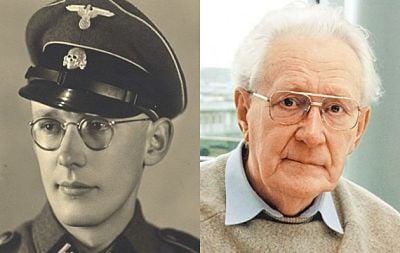 Heinrich Boere Heinrich Boere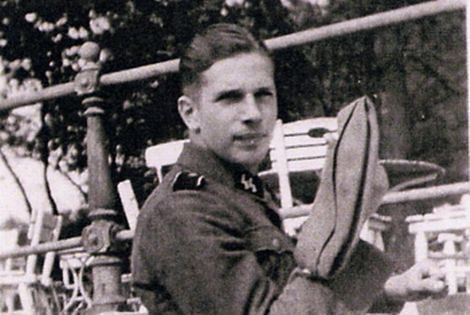 Klaas Carel Faber Klaas Carel Faber Pieter Johan FaberOne of the most prominent victims of Operation Silbertanne was Dutch writer A. M. de Jong [nl], who was killed in October 1943. Pieter Johan FaberOne of the most prominent victims of Operation Silbertanne was Dutch writer A. M. de Jong [nl], who was killed in October 1943.

Dutch writer A. M. de Jong was killed in October 1943 during Operation Silbertanne
The Dutch National Socialist NSB party leader Mussert was fundamentally opposed to Operation Silbertanne, and when in autumn 1944 SS Brigadeführer Karl Eberhard Schöngarth, head of SiPo and SD, was informed of these retaliatory killings he had them terminated in September 1944. SS Brigadeführer Karl Eberhard Schöngarth terminated Operation Silbertanne in September 1944ProsecutionAfter World War II, some of the members of the death squad and those responsible for giving the orders were put on trial. Henk Feldmeijer, however, had been killed in the war. Maarten Kuiper and Pieter Johan Faber were executed in 1948. Hanns Albin Rauter was sentenced to death and executed in 1949. Others, however, managed to flee the country and went into hiding outside the Netherlands. Sander Borgers died in 1985 at the age of 67 in Haren, Germany. Klaas Carel Faber lived until his death on May 24, 2012 in the Bavarian city of Ingolstadt. In July 2009 it was reported that the German government wanted to prosecute Faber after all. Daniel Bernhard died in 1962. Lambertus van Gog fled to Spain but was extradited to the Netherlands in 1978. Heinrich Boere, who has been living for decades in Germany, was found fit to stand trial for the murders committed between 1943 and 1944, by the Provincial Court of Appeal in Cologne on 7 July 2009, and subsequently was found guilty and sentenced to life in prison in March 2010. Boere died in a prison hospital on December 1, 2013. SS Brigadeführer Karl Eberhard Schöngarth terminated Operation Silbertanne in September 1944ProsecutionAfter World War II, some of the members of the death squad and those responsible for giving the orders were put on trial. Henk Feldmeijer, however, had been killed in the war. Maarten Kuiper and Pieter Johan Faber were executed in 1948. Hanns Albin Rauter was sentenced to death and executed in 1949. Others, however, managed to flee the country and went into hiding outside the Netherlands. Sander Borgers died in 1985 at the age of 67 in Haren, Germany. Klaas Carel Faber lived until his death on May 24, 2012 in the Bavarian city of Ingolstadt. In July 2009 it was reported that the German government wanted to prosecute Faber after all. Daniel Bernhard died in 1962. Lambertus van Gog fled to Spain but was extradited to the Netherlands in 1978. Heinrich Boere, who has been living for decades in Germany, was found fit to stand trial for the murders committed between 1943 and 1944, by the Provincial Court of Appeal in Cologne on 7 July 2009, and subsequently was found guilty and sentenced to life in prison in March 2010. Boere died in a prison hospital on December 1, 2013. Henk Feldmeijer was a member of the Sonderkommando-Feldmeijer between September 1943 and September 1944, and executed at least 20 people for resistance activities in an operation named Silbertanne Aktion. Henk Feldmeijer was a member of the Sonderkommando-Feldmeijer between September 1943 and September 1944, and executed at least 20 people for resistance activities in an operation named Silbertanne Aktion. Another Dutch Nazi war criminal was Siert Bruins (Weite, the Netherlands, 2 March 1921 – 28 September 2015), also known as Siegfried Bruns and nicknamed the Beast of Appingedam, was a Dutch member of the SS and SD during World War II. 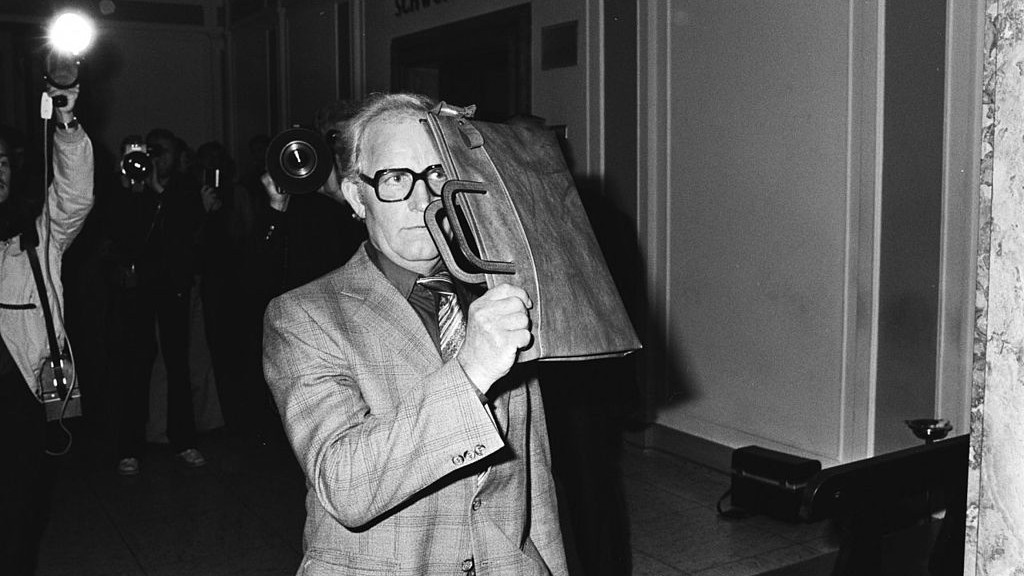 Siert Bruins in 1979 Siert Bruins in 1979
|
|
|
|
Post by pieter on Mar 4, 2019 18:48:26 GMT -7
Pieter Menten Menten in the SS Totenkopfverbände, 1941Pieter Nicolaas Menten (May 26, 1899 – November 14, 1987) was a Dutch World War II war criminal, businessman, and art collector.BackgroundBorn into a wealthy Rotterdam family, Menten became interested in Poland through his father's business connections. He soon developed an extensive export trade in Dutch products to Poland. Menten moved to East Galicia in 1923 (then in Poland and later part of the Ukrainian Soviet Socialist Republic), where he became a wealthy landowner and businessman. Described as mild-mannered and quiet, he developed a deep grudge against a prominent neighboring Jewish family over a business dispute. Menten travelled back to the Netherlands in 1939, when the Sovjet Union invaded eastern Poland. He was in Cracow in 1940 where he worked as a Treuhänder (Aryaniser) of a number of Jewish art dealerships. He returned to Poland in 1941 after the Nazi counter-occupation—this time as a member of the SS. Menten was involved in the massacre of Polish professors in Lviv (Lwów) and robbery of their property. According to witnesses, he helped shoot as many members of the offending family in Galicia as he could find, then turned on other Jews in the area.Trial Menten in the SS Totenkopfverbände, 1941Pieter Nicolaas Menten (May 26, 1899 – November 14, 1987) was a Dutch World War II war criminal, businessman, and art collector.BackgroundBorn into a wealthy Rotterdam family, Menten became interested in Poland through his father's business connections. He soon developed an extensive export trade in Dutch products to Poland. Menten moved to East Galicia in 1923 (then in Poland and later part of the Ukrainian Soviet Socialist Republic), where he became a wealthy landowner and businessman. Described as mild-mannered and quiet, he developed a deep grudge against a prominent neighboring Jewish family over a business dispute. Menten travelled back to the Netherlands in 1939, when the Sovjet Union invaded eastern Poland. He was in Cracow in 1940 where he worked as a Treuhänder (Aryaniser) of a number of Jewish art dealerships. He returned to Poland in 1941 after the Nazi counter-occupation—this time as a member of the SS. Menten was involved in the massacre of Polish professors in Lviv (Lwów) and robbery of their property. According to witnesses, he helped shoot as many members of the offending family in Galicia as he could find, then turned on other Jews in the area.TrialWhile travelling in his personal train with his prized art collection, he was recognized by Dutch Resistance fighters. He was brought to trial. His chief defense lawyer was Rad Kortenhorst, President of the Dutch House of Representatives. The controversial trial concluded in 1949, with the prosecution unable to prove most allegations, and Menten was sentenced to an eight-month term for having worked in uniform as a Nazi interpreter. In 1951 the Dutch government refused a Polish request for Menten's extradition. Menten would go on to become a successful art collector and businessman. His 20-room mansion was filled with valuable art work ( Nicolaes Maes, Francisco Goya, Jan Sluyters, etc.) and he held vast areas of real estate. In 1976, the case was reopened. During the trial, Menten's mansion was set ablaze after a survivor of Dachau concentration camp threw a petrol bomb onto its thatched roof. The building suffered extensive damage and some of the art collection was destroyed. In 1980 Menten was sentenced to 10 years in prison and was fined 100,000 guilders for war crimes, including being accessory to the murder of 20 Jewish villagers in 1941 Poland. Upon his release he believed he would settle in his County Waterford mansion in Ireland only to find out Garret FitzGerald, Taoiseach at the time, had barred him from the country. Menten died at a senior's home in Loosdrecht, Netherlands.  Pieter Menten (16 May 1977)Trailer of a very exiting and good tv series about the case of Pieter Menten Pieter Menten (16 May 1977)Trailer of a very exiting and good tv series about the case of Pieter Menten
|
|




























